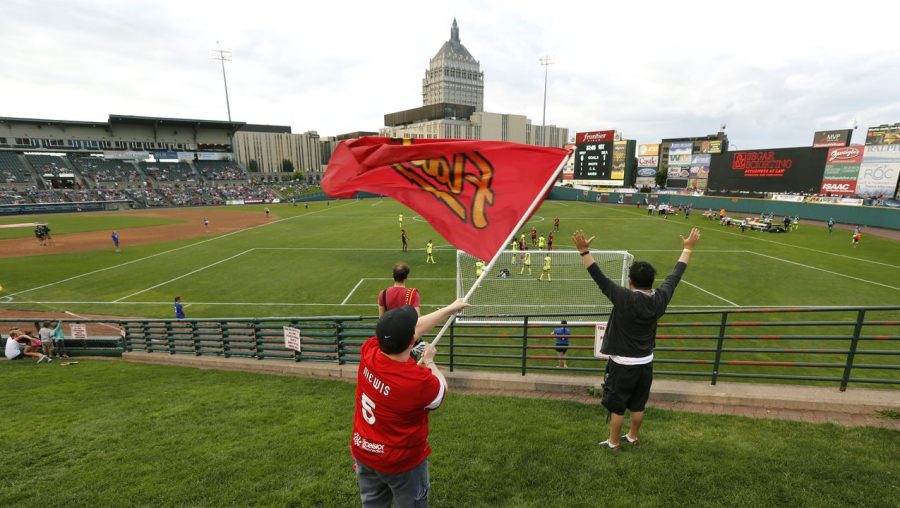The Fading Game
The game, between the now defunct Western New York Flash and the Seattle Reighn, which was played on the smallest field allowed by soccer’s governing body. Cred: Carlos Ortiz
May 15, 2019
The U.S. women have won three World Cups, four Olympic Golds, eight Gold Cups, have produced five FIFA World Players of the Year. We have the best women’s team in the world, and yet our nation has less professional teams than Boise has Wendy’s. How does a country with the level of talent that we have not have the best pro league in the world?
This is our country’s third time trying to start a professional league, and for the third time, it’s on the verge of collapse. It seems odd, for the amount of money that’s invested in soccer by parents, schools, and companies in developing young girls.
For many, the ultimate goal is college, but that’s where it ends. That shouldn’t be the case. Girls and young women should be able to play professionally without worrying about anything but soccer.
And let’s go back to that word, professional. For being a professional league, it’s anything but.
You can’t call something ‘professional’ when a player’s salary is one-third of what a teacher makes in Idaho. Which, surprisingly, is up from 6,000 dollars per year in 2013. In some of the biggest and most expensive cities in the world, that is not enough to live, let alone live comfortably. Many players have had to take second jobs to make ends meet, which is unheard of in any professional league.
It’s not completely the clubs’ fault, though. They are given a salary cap (the money allocated to each team to pay their players) of $350k, which is nowhere near enough to pay an entire team.
This brings back around the equal pay struggle that has been going for centuries. Many people know about the women’s national team, and how their salaries are not even comparable to the much less successful men’s, but at least they get a living wage. Many of the best Americans’ are even going over to play soccer in Europe, where the women’s game is not as strong, just so they can get a good pay.
It’s not only the low wages that have the NWSL in danger of folding. A game last season was moved to the outfield of a minor league baseball team because a music festival was being hosted in their regular stadium. Not only is that a tiny field, but there is no way fans can enjoy the game because it’s being played in a baseball stadium. These conditions are not right. Not for the players, not for the coaches, not for the fans.
But luckily, a solution is rising up from the dust of countless failed professional leagues. The little known WPSL, the Women’s Premier Soccer League, is slowly gaining popularity.
A semi-professional league, it is the biggest women’s league in the world, with one hundred and nineteen teams competing for the championship. Of course, teams can’t travel to play all other 118 teams, so they play only against teams in their area until the playoffs. The reason this league is so much better than the others is because they do things the right way.
They support the fans, they make good business decisions, and unlike the NWSL, they’re not trying to be the NFL or NBA of women’s soccer. They are doing things in ways never seen before, with fan-owned teams, and soccer-specific stadiums. They have local rivalries and cheap tickets. This is what soccer is supposed to be, and this is the future of soccer in the U.S.A.



